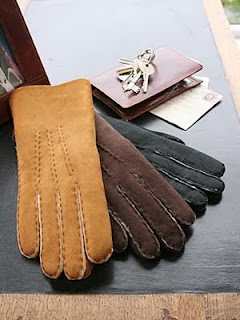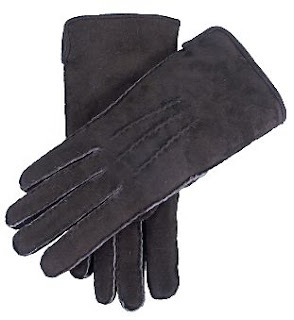Think of it like this: You're in a shopping mall. Most of the shop windows give you a clear idea of what you'll find inside from the type of products (with the most popular likely to get you inside) and, usually, the sort of prices.
You come to a shop that has nothing in the window. Inevitably you walk straight past.
Web shopping is a bit like that, and we usually visit online retail shops for one of three reasons -
i) We know who they are, so we know that we're already likely to shop there;
ii) We visit because we're looking for a particular type of product and search, or a directory such as http://www.thesiteguide.com/ or a mention in a glossy mag has suggested we take a look;
iii) We stumble there by chance, without recommendation, because we've found a link somewhere, on a price comparison site or Google ad - where although we'll have an idea of the type of products, we'll know nothing about the retailer.
It's at this point that the 'shop window' becomes of major importance, because that's really what a Home Page is - the place that people decide, in a very few seconds, whether they're going to buy from you or not. Unlike a store shop window your visitors aren't going to stop and have a good look, we know for a fact that you have just a few seconds to pursuade your visitors that they'll want to buy from you today, and this comes down to just a very few things:
1. Visitors need to be able to see immediately who you are, and what you're offering, or they'll be gone. You have no doubt when you visit net-a-porter that this is the place fashionistas to find designer clothes and accessories.
2. If you want people to buy from you as well as learn about you, the heading Online Shop, or Shop Online, or Online Boutique needs to be very, very clear. Don't try and call it anything clever, such as The Boutique (which could lead to information about your offline store) or Collections (which could be anything and which I came across yesterday) or anything else which might cloak your main message;
'Hi there, come and shop with us today'. 'Online Boutique' is clear and simple. 'The Boutique' could be one of two things. Don't confuse.
3. Lead people in through great pictures of your best sellers and clear category headings. Don't make the mistake of having products you're trying to get rid of fast on your home page, seduce visitors with items that you have already proved work for you and you're far more likely to get visitors attention. Make sure that your pictures are really clear and enticing and put your most popular three categories at the top of the list as attention grabbers. Go alphabetical after that.
For the majority of fashion stores, and particularly at this time of year, dresses are the No 1 seller. Take a look at net-a-porter.com and Matches and see where they put their top selling item of clothing, then follow their lead.
4. Let visitors click quickly through to the product they're looking for. As I've said before, shopping on the web is about instant gratification - yes people will want to browse when they're reached the type of product they're looking for really fast. The more clicks they have to make, the more customers you'll lose.
At net-a-porter.com for example I just click on Clothing, then Dresses, and I'm there. Page after page of mouthwatering dresses.
Debenhams brand new website, launched just a few days ago, is a really good example of this. Whereas before I had to dance through hoops to get to a specific product, now it is literally just one click to getting to a product or brand. Point at the category, click from the beautifully clear drop down menu and you're there.
They draw you in in a way which makes it almost impossible for you not to want to shop, because you now find what you're looking for in a flash, whether it's
Betty Jackson Black,
partywear for kids,
what's new from Benefit or
their selection of well priced skiwearTheir new search facility is pretty amazing as well. Look and learn.
5. Create instant trust with your visitors
a) By letting them see what other customers have said about you. I've written about this before but I can't stress enough how important this is. Eventually almost all online shops will be plugged in to one kind of customer feedback system or another.
Provided the review system you work with is independent, trusted, and obviously can't be manipulated you can instantly
Establish trust,
Increase your sales
And, (by reacting to the feedback you get) streamline your procedures to match what your customers are looking for.
I'm lucky enough to be working with one such feedback platform at
http://www.ekomi.co.uk/.
You can find out more about them in the Retailers' section at http://www.thesiteguide.com/ where there's a special offer as well plus a great comment from one of their customers.
b) Sign up to an accredited retailer scheme such as IMRG's ISIS. Again you'll find more details here.
If you are a small online retailer as opposed to a household name, both of these become even more essential.
With the whole world going online, it would seem, and a whopping 93% of us expected to shop online this Christmas, you can't afford to ignore the elements that will turn your visitors into customers, they're not rocket science, they're just plain good sense. Are you following them?
If you'd like an individual review for your website you can find out how in the Retailers' section at thesiteguide.com or contact me direct at
[email protected].
 Today when I looked out of the window the first thing I did was go to my glove drawer. Ok, that sounds pretentious, and it doesn't only have gloves in it, but that's where they all return to, hopefully in pairs, when the glove-wearing season is over. I do find pairs that have been stuffed into coat pockets and forgotten, as you do, but try to get them back to their home so they're waiting for me when I'm in need. Like today.
Today when I looked out of the window the first thing I did was go to my glove drawer. Ok, that sounds pretentious, and it doesn't only have gloves in it, but that's where they all return to, hopefully in pairs, when the glove-wearing season is over. I do find pairs that have been stuffed into coat pockets and forgotten, as you do, but try to get them back to their home so they're waiting for me when I'm in need. Like today.


